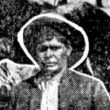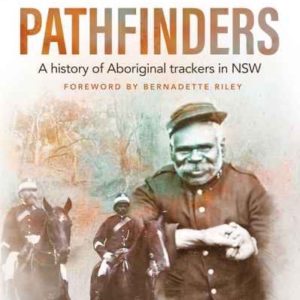Loading map...

Alexander Ward (also known as Alexander King) was born at Bingebah Station on the western fringe of the Pilliga Scrub on 5 September 1887. He was the son of William King, an Aboriginal stockman born at Coonamble, and Jane Ward of Windsor in western Sydney. He married Stella Duncan of Coonamble at Burra Bee Dee Aboriginal Station in July 1916. Two years later the couple moved to Wee Waa where Alexander was appointed as the local tracker, a job he would hold for almost 31 years. He was particularly proud of the leggings he wore as part of his police uniform, indicating that riding horses was a favorite part of the job, a skill no doubt learned growing up on pastoral stations with his father.[ref]Birth Certificate of Alexander King 1887/029281; Stories of Wee Waa by Ian Thompson, self-published 2000. Stella Duncan’s paternal grandmother was Kitty Moore of Buckinbah near Yeoval, the same station in Wiradjuri country where noted poet Banjo Paterson was raised by an Aboriginal nanny in the early 1860s (see Aboriginal Heritage Study for the Cabonne and Blayney Council Local Government Areas by Michael Bennett of NTSCORP, unpublished report 2016).[/ref]
Alexander’s eyesight deteriorated in later years, but the police kept him on the payroll. He would come to the station during the week, chat with colleagues and work in the garden. Tragically, he was run over and killed by a drunk driver on the main street of Wee Waa on 4 June 1949. He was survived by seven children (Bruce of Walgett, Alfred of Condobolin, Charles, Neville, Dolly and Rosie of Wee Waa, and Elsie of Narrabri). His wife Stella had passed away five years earlier in Broken Hill.[ref]Narrabri Valley Independent 9 June 1949: 1; Death Certificate of Stella May Ward Frost 1944/001151.[/ref]

 This website explores the history of Aboriginal trackers in NSW from 1862 when the current NSW Police Force was established through to 1973 when the last tracker, Norman Walford, retired. You can read about the lives of individual trackers and some of the incredible tracking feats they...
This website explores the history of Aboriginal trackers in NSW from 1862 when the current NSW Police Force was established through to 1973 when the last tracker, Norman Walford, retired. You can read about the lives of individual trackers and some of the incredible tracking feats they...

There were over 200 NSW police stations that employed Aboriginal trackers between 1862 and 1973. Many were concentrated in the central-west and north-west of the state, the agricultural and pastoral heartland of NSW. This is because one of the main jobs of trackers was to pursue sheep, cattle and horse thieves. Trackers sometimes lived in small huts out the back...
Learn More ►
Pathfinders book Pathfinders, A history of Aboriginal trackers in NSW, written by Dr Michael Bennett and published by NewSouth, is now available from all good bookstores. Click on the link below to order your copy. https://www.abbeys.com.au/book/pathfinders-a-history-of-aboriginal-trackers-in-nsw.do Early History Since the beginning of the colony, government agencies, explorers, surveyors and members of the general public called upon the tracking...
Learn More ►